What kind of wood to choose for a stove, fireplace or barbecue? Looking for hot ones or with less heat output, but capable of cleaning the chimney from soot and soot? Resinous or with a weak aroma, from which the soul becomes light and joyful? There are general recommendations as well. So, with long-term storage, the quality of absolutely all firewood decreases. Especially if they get wet, rot and become overgrown with lichen or mushrooms. Do not let boards covered with paint or varnish on the firewood.
It is more profitable to buy chopped firewood in large quantities at once. However, the smaller the "packaging", the less and the likelihood of marriage. Firewood in portioned polypropylene nets or other packaging is more expensive. Not only firewood of natural moisture goes on sale, but also chamber drying, the price of which is higher. A woodpile with rounded logs looks beautiful. There are people who are eager to buy eurowood, considering them a convenient substitute for natural ones. When buying firewood, it is advisable to clarify the type of wood and the region from which it was delivered.
Rounded firewood in a woodpile
Benefits... Birch firewood has always been considered the best: clean and hot. They burn with a high hot flame, do not shoot, do not spark and completely burn out. Many people love the delicious aroma that comes from a stack of fresh firewood.
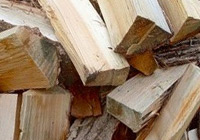
Difficulties... Birch firewood generates such intense heat that it sometimes causes fires. In any village you will be told sad stories about a burned down house in which a strong fire was lit. And they will clarify that the poor fellows threw too much birch firewood into the oven at once. This usually happens in cold autumn or frosty winter, when they want to warm up a frozen house as soon as possible. Quite often the dachas that people come to for the New Year holidays are on fire.
When stored for a long time (over two years), chopped birch firewood loses its special aroma.
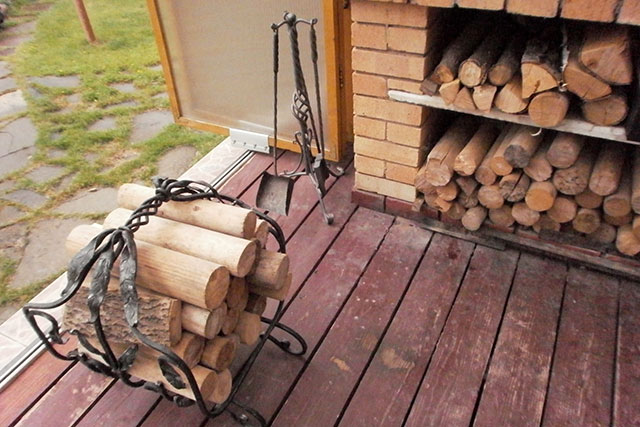
Often rounded firewood is a waste of plywood production
There is one more feature of this firewood. A village woman I know complained to me that her chimney was quickly clogged with soot and soot. But she fires the stove exclusively with birch wood.
Benefits... Pine and spruce firewood is immediately recognizable by its special resinous aroma. They are inexpensive. Often sawn spruce and pine boards left after construction or renovation are used for kindling.
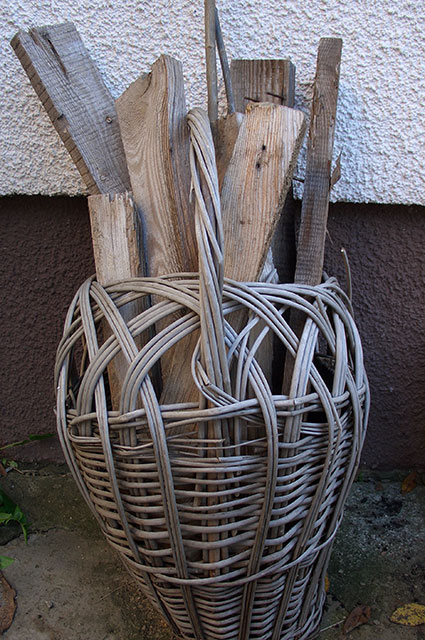
Spruce wood firewood
Difficulties... This firewood crackles, shoots and sparks a lot, so you need to put protective shield... Without it, there will be trouble, because not only sparks fly out of the fireplace or stove, but also hot coals. Flaming pieces of wood often appear on it. There should be no carpets or mats in front of the fireplace or stove. The wooden floor must be covered with a sheet of metal, floor tiles or other non-flammable materials.
Not everyone likes to heat the stove in the sauna with pine or spruce wood, because there is a lot of resin in them, and too much ash remains. Pine and spruce do not burn out as quickly as birch. You can burn yourself out if you close the chimney hole before all the coals go out.

Pine and spruce firewood produces a lot of ash
Oak firewood
Benefits... Hard oak wood from middle-aged trees burns for a long time, gives a lot of heat and a subtle aroma. They are considered valuable and expensive.
Difficulties... You cannot cut down a young oak tree for firewood: there will be little heat from it. Old oak doesn't work either. The air becomes heavy, takes on the smell of charcoal. Not all people can stand it. There is more ash after burning such firewood than from middle-aged oak firewood.
Alder firewood
Benefits... Alder firewood is the best. They have long been considered healing. They were kindled in order not only to keep warm, but also to enjoy the magical aroma. They say that it was with alder wood that they stoked the stoves in the royal and boyar chambers.
Difficulties... Alder trees, which were felled in swampy areas, are often used for firewood. They are completely different: they have a lot of soot, and the heat is not light, but heavy. Such alder wood cannot be called "royal" in any way.
Linden firewood
Benefits... This is a wonderful firewood with a honey aroma. I also like the wood itself, from which the craftsmen carve beautiful products. The heat is mild and gentle, so beauticians believe that it is good for the skin. Stoves, fireplaces and baths are heated with linden during colds and sore throats.
Difficulties... For most people, linden wood is a luxury. They rarely heat the stove. Linden firewood burns evenly, but it flares up slowly and gives less heat than other tree species.
Willow wood
Benefits... Willow wood burns hot, quickly burns out. They don't shoot and smoke a little.
Difficulties... Willow firewood is difficult to obtain if sanitary felling is not carried out nearby. We have accumulated a lot of such firewood, because a few years ago, three huge willow trees had to be shortened with brittle ones, whose branches clung to wires.
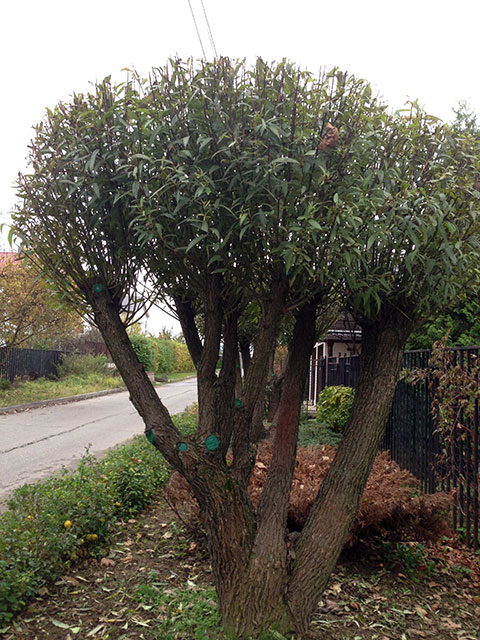
Brittle willow grows quickly
Aspen firewood
Benefits... This wood is not smoked, it burns with a high flame, but it gives off heat only in a hot stove. Aspen is prized for its ability to clean soot and soot from the chimney. A similar quality, but in lesser degree, possess firewood from poplar. They can not only heat the stove, but also put it in the stove at the end of the firebox.
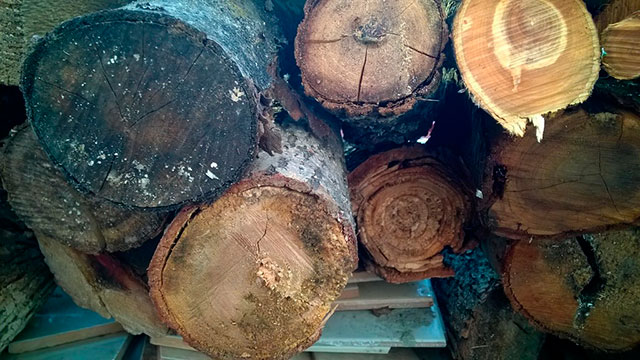
Aspen and silver poplar firewood left over from formative pruning of old trees
Difficulties... Aspen firewood burns slowly and gives little heat in a cool firebox. Aspen causes weakness in some people, so this is not the most best tree for a bath.
Fruit trees
Benefits... Apple, pear, cherry, plum and other fruit trees make excellent firewood. Hot, clean and aromatic. They are free for site owners. I burn all the thin twigs in a fire or in a barrel, and put the thick ones in a woodpile. These firewood does not need to be dried as long as oak or alder. Even fresh apple twigs burn well. Along the way, I note that excellent firewood is obtained when rejuvenating old lilacs. This fall I had to form some bushes. Thick trunks were used for firewood, thinner branches burned in the barrel.
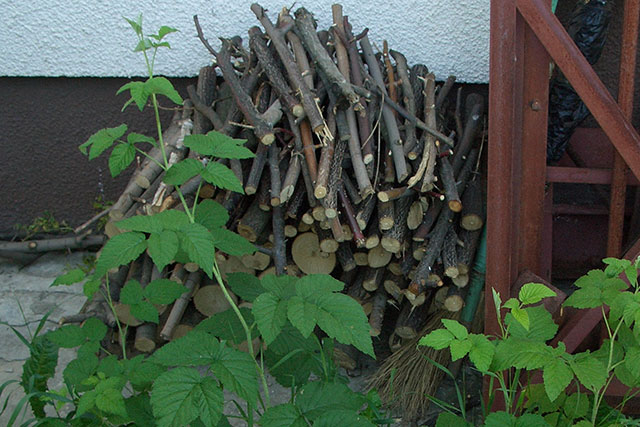
Thin branches for a fire, thick branches for a fireplace
Difficulties... A stack of firewood from fruit trees does not look very neat. In addition, these firewood appears only from time to time. By the way, the vine does not burn well, even when dried.
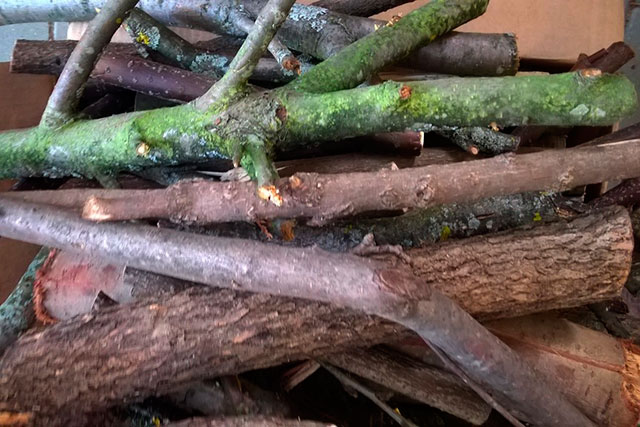
It is difficult to fold a woodpile from such firewood
I have listed the firewood with which most often fireplaces and stoves are heated in the Moscow region. In addition to them, there is also firewood from maple, hazel, larch, juniper and some other species of shrubs and trees. Most of us cannot afford such luxury as beech.
Advertised eurowood- these are fuel briquettes, similar to a brick, bar or polyhedron with an internal hole. They are made from compressed crushed wood (often sawdust) or other natural materials. Sometimes they take waste from logging, peat extraction, etc. The result is a convenient concentrate with high efficiency. So, when burning one cubic meter of Euro wood, about the same amount of heat is released as from five to six cubic meters of natural wood.
© Alla Anashina, website
© "Podmoskovye", 2012-2017. Copying texts and photos from the site pоdmoskоvje.cоm is prohibited. All rights reserved.It is known that oak, birch or beech firewood gives more heat than pine, aspen, alder. Moreover, such hard species as maple and oak retain heat longer and burn with a calm flame. It is better to use them when the furnace hole is large. Softwood burns faster and produces a lot of sparks. More soot is produced by birch, less so by alder and especially aspen, such firewood not only does not produce soot, but is also able to burn it out of the chimney.
The calorific value of firewood depends on its moisture content and the type of wood. For example, 1 cubic meter of birch firewood is equivalent to 0.75 - oak, 1.1 - alder, 1.2 - pine, 1.3 spruce, 1.5 - aspen firewood. Dry firewood easily ignites and produces little ash; when burning, it develops a higher temperature, gives more heat and therefore is more economical.
Aspen firewood is not cooked - it gives little heat. All year round only the poor used to heat the stoves with such wood. Birch firewood differs from aspen firewood not only in the composition of the wood, but also in density, they are much heavier than them.
The higher the density of wood, the more heat it gives during combustion. Alder wood was popularly called royal firewood. A lot of heat is given by the wood of oak, ash, elm, as well as fruit trees: apple, pear, plum and cherry. Apple wood is especially hot and smokeless. All types of willows burn hot and without soot, but they burn very quickly. Therefore, more willow wood is consumed per firebox than any other.
Wood of one species gives more ash, while the other gives less. Experts call this property of wood ash content. High ash content is found in soft hardwoods such as poplar and willow.
PINE FIREWOOD
Softwood firewood is famous for its pleasant aroma of essential resins. Resins, when burned, release a substance useful during combustion. 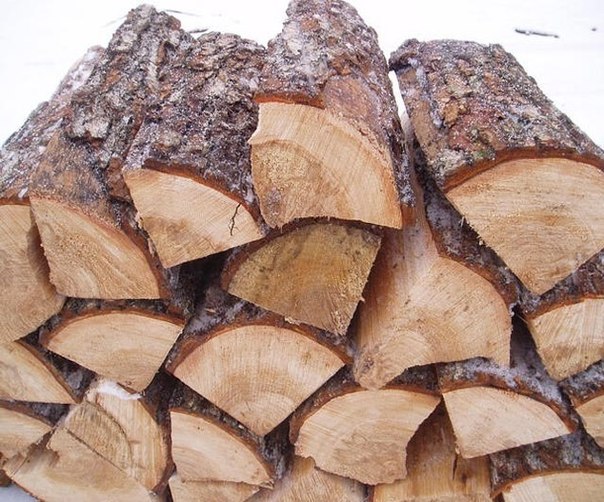
Pine firewood has an average heat transfer. They have a low cost and are available.
But you need to be careful with pine firewood.
When burning, the pine crackles, sparks can fly out! Pine is resinous.
ASPEN FIREWOOD
Aspen firewood is not particularly popular. The fact is that if you do not mix aspen wood with others, then there will be little fire from them. And it is quite difficult to light up an aspen. But there are also big pluses. For example, aspen is cheaper in cost. 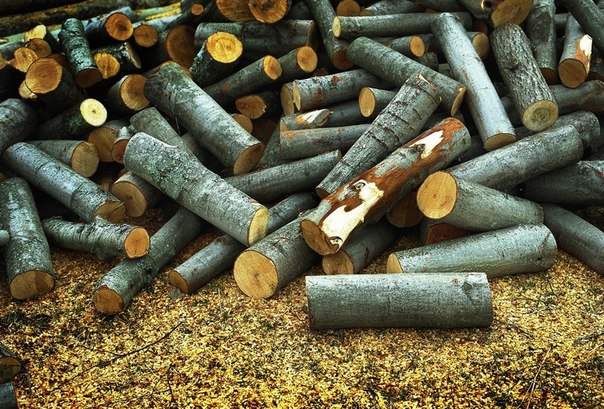
Aspen firewood emits little smoke when burning. They also contribute to the burning of soot in the chimney after using, for example, birch firewood.
OAK WOOD
Oak firewood is well suited for a bath and a fireplace. Of all types of wood, oak has the highest heat transfer. And also the oak burns the longest, you do not have to often put new logs in the fire. 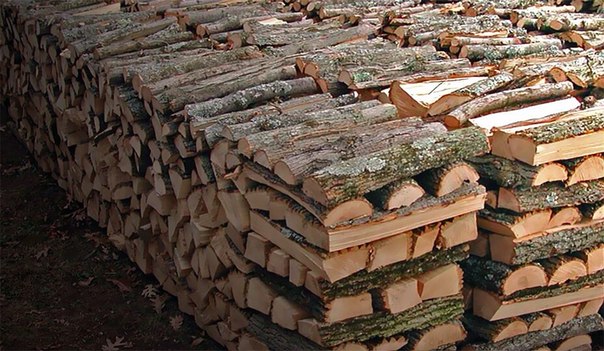
Oak firewood is good for grilling food. But it is worth choosing the logs well.
The oak should not be old and decrepit. Otherwise, an unpleasant smell and ash cannot be avoided!
However, it will be very difficult to find oak firewood in Perm. Oak grows more in the western regions of Russia.
BIRCH FIREWOOD
Birch firewood is a symbol of the Russian village. Birch is a symbol of the nation. And also an excellent fuel that is affordable and versatile. 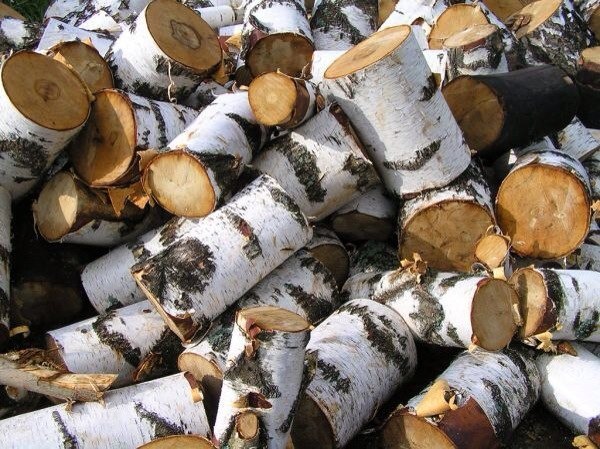
Birch firewood is ideal for fireplaces and stoves. In terms of heat transfer, they are second only to oak firewood. The flame from the birch wood is even, without sparks. The aroma gives the atmosphere coziness and peace.
You should not often heat a stove or fireplace with birch wood, because the chimney from the birch is quickly clogged with resin and soot.
The main indicator of fuel quality is its calorific value during combustion. So the question is, which firewood is better, is of particular importance. And even more so for a bath. After all, when choosing firewood for a sauna, we should know that the quality of steam in the steam room - the main source of health and joy - also depends on them.
Basic information
In Russia, birch firewood was considered the best for a long time. This is understandable. Birch bark alone helped to melt the stove easily and quickly. Having heated it with such wood, the dwelling received the much-needed heat in the coldest time of the year, and the bathhouse received hot steam. But is it? Maybe there are other types of fuel that are not inferior to birch, or even surpass it in important parameters - specific calorific value and, as a result, consumption during combustion.
This table shows the calorific value for the combustion of the main types of wood.
Wood species | Density of wood, kg / dm³ | Working calorific value, kcal / dm³ | Maximum combustion temperature, ° C |
| Ash | 0.75 | 1603 | 1044 |
| Oak | 0.69 | 1538 | 900 |
| Birch tree | 0.65 | 1319 | 816 |
| Pine | 0.52 | 1135 | 624 |
| Linden | 0.51 | 1092 | 660 |
| Alder | 0.50 | 1032 | 552 |
| Aspen | 0.49 | 1018 | 612 |
| Spruce | 0.45 | 933 | 600 |
As can be seen from the above data, ash is the undoubted leader. When one cubic decimeter of ash is burned, 1603 kilocalories of thermal energy are generated, while birch gives only 1319 kilocalories. If we compare these values \u200b\u200bwith the volume of firewood, then, for example, birch will need 1.22 m³, and ash - 1 m³.
The pattern is as follows: the higher the specific density of wood, the greater its calorific value and thermal energy efficiency.
Basic information about wood used in the heating of a heater
Hardwood
Deciduous tree species are classified as hard and soft. Hardwoods include ash, maple, oak, beech, walnut. Representatives of soft species are birch, alder, linden, aspen.
Ash. Solid and elastic wood in a light yellow matte shade. Its properties are close to oak. It is believed that a blessed and healing spirit emanates from the ash. Has the highest calorific value. If you are a true lover of hot steam and do not mind spending money, then this will be an excellent choice.

Oak. Practically in no way inferior to ash. Refers to "elite" fuels. Along with thermal energy, it has energy released during combustion, which enhances willpower and cleanses the soul. Burning oak logs takes a long time with the release of a large amount of heat. Using high-quality and well-dried wood, you can easily create the scent of an oak grove in a steam room.
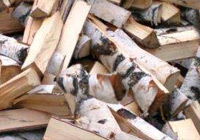
Birch tree. It burns easily and evenly, creating a fragrant and pleasant aroma in the steam room. It has a beneficial effect on the respiratory system, curing colds. Although the calorific value is lower than that of oak and ash, birch copes with the main task - getting hot steam. However, it has a rather high degree of resinousness, especially when birch bark is burned.
Note: as a prophylaxis against clogging of the chimney with combustion products, it is recommended to heat it with aspen wood and potato peelings.
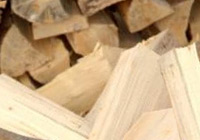
Linden. The aroma that comes from the burning of linden is one of the most healing in comparison with other deciduous woods. Prevention colds and flu - that's what else they give. To take full advantage of this healing property, it is necessary to burn them in the first two years after harvesting. Otherwise, they will lose all flavor and will only be a source of heat. A positive quality is the ability of linden logs to generate uniform heat throughout the entire combustion period. This property is perfectly combined with the need to maintain a constant steam temperature in the steam room of a Russian bath. But we must take into account the fact that they flare up hard.
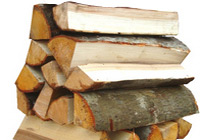
Alder. It is not for nothing that these firewood received the name "royal" due to the fact that they contain very little resinous substances. But it is they who are mainly the source of smoke during combustion. Alder logs are generally out of competition for the smoke sauna. Although it has a lower heating value than oak, ash or birch, alder wood is very popular with many owners. There is an explanation for this - a healing aroma, quick drying, no smoke, uniform combustion, ample heat release, availability on the market and reasonable prices. Of course, provided that the procurement of alder firewood was carried out in non-boggy lowlands. By choosing this type of fuel, you will have a well-heated steam room with hot steam and will not have problems with periodically cleaning the stove and chimneys from soot.
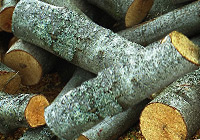
Aspen. Most controversial firewood. On the one hand, they ignite poorly, burn quickly and give little heat, and on the other, they are indispensable as a means for cleaning the chimney. In Russia, they have long been used in baths for this very purpose. Although it is also possible to use aspen as the main fuel, it is not recommended. A zealous owner will always have a small amount of aspen firewood and regularly heat the sauna stove with them to remove soot and burning from the chimney.
Conifers
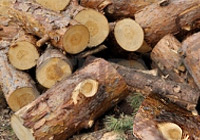
They are rarely used as the main fuel in the bath, although they emit a sufficient amount of heat. A distinctive feature of coniferous wood is the presence of a large amount of resin, the combustion of which produces a lot of smoke and soot. Combustion of coniferous firewood such as pine or spruce produces crackling and strong sparks. And spruce firewood also fires hard with coals. For this reason, it is necessary to ensure proper fire safety, as this can cause a fire. And, of course, timely clean the chimney from combustion products, the excess of which can also cause a fire.
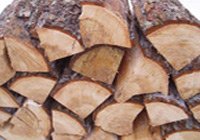
Coniferous wood firewood creates a unique coniferous aroma in the steam room, having a beneficial effect on the activity of the respiratory system. They burn well and evenly and give quite a lot of heat. However, due to the low calorific value, much more of them will be required than hardwood firewood.
Fruit breeds
Oddly enough, but firewood from fruit trees (apple, pear, cherry, plum) is an excellent fuel for sauna stove... They burn beautifully and for a long time, emitting the minimum volume of smoke and the maximum amount of thermal energy, comparable to the best hardwoods.
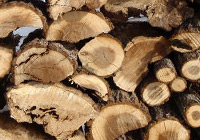
The only drawback of firewood from fruit trees is that they are hard to burn. Therefore, before you heat them, you need to melt the stove with birch, alder or other well-flaming type of wood, and then add fruit wood. The result is unambiguous - the steam room will be filled with an exceptional aroma of apple, pear, cherry or plum. After all, it is no accident that in the west, when cooking barbecue, they use plum, which gives food a sweet and sour taste.
findings
Based on the foregoing, it is possible to conditionally subdivide firewood for a bath into two types - good and average. Good firewood is ash, oak, birch, alder, fruit trees. The middle ones are all the others. So which firewood is better, all the same?
Much depends on your personal capabilities and availability required type firewood. In one region, for example, oak grows, while in another it is not even close. And the financial support is not the same for everyone. If we take the averaged version, then the best choice there will be alder. If you do not take into account the prices - then, of course, ash or oak. And birch, all other things being equal, is a good choice. In a word - the choice is yours!
Even if you decide to buy the best and most expensive firewood, their misuse will not give the desired result. Therefore, it will be devoted to the topic of their preparation, drying and storage.
Go to main article content:.
Since ancient times, Russian baths have enjoyed well-deserved respect. They became the best medicine from many diseases and blues. The healing heat of a bath largely depends on the quality of the firewood prepared for it. Today our article is devoted to the selection of logs and their correct use.
Features and types of firewood for a bath
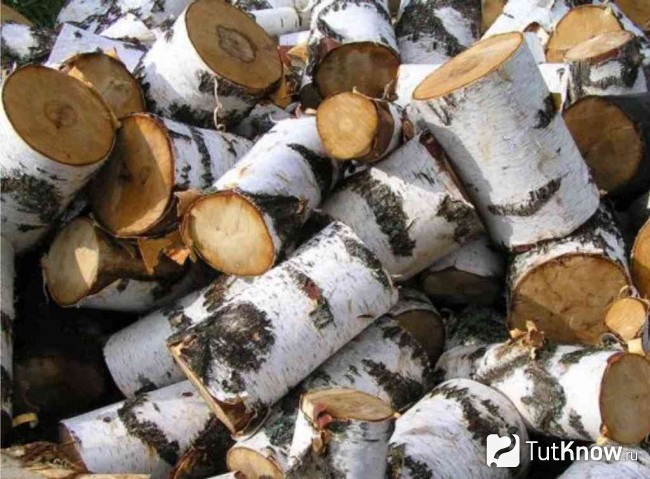
To know how to choose firewood for a bath, you need to take into account the relevant requirements for them: good heat from burning logs, a long burning period of wood, a pleasant aroma from firewood in the firebox, a minimum layer of soot in the chimney.
Consider the properties of firewood from various types of wood:
- Alder... Firewood from it has long been considered "royal". Alder wood is light and porous. It dries quickly and flares up. Long-term storage of firewood practically does not affect their quality. Alder gives off intense heat and almost no smoke due to the scanty content of resinous substances. The latter property makes it suitable for kindling a sauna "in black". Alder wood has a healing effect on the respiratory system and counteracts colds.
- Oak... High-quality firewood is obtained from middle-aged trees. The heat transfer from oak is the highest. Its logs are also suitable for a “black” bath - the special spirit of the forest is guaranteed. Oak firewood is also dominated by healing properties... Their energetic abilities are believed to purify the soul. This is an expensive type of tree.
- Birch tree... It has an ideal ratio for the price and quality of firewood made from it. Birch logs are available, they give excellent heat, which determines the quality of the wellness bath procedures. Thanks to birch bark, birch firewood for a bath is highly flammable and maintains heat for a long time, which has a disinfecting effect and a subtle healing aroma. Birch firewood cures colds.
- Linden... Firewood from it burns quickly due to the low density of the wood. The calorific value of linden wood is also low. Their advantages include a healing aroma and uniform heat.
- Cherry... Firewood from this tree is easily pricked, but poorly kindled. There is more smoke from them than from other fruit tree varieties.
- Coniferous trees... Spruce, larch and pine firewood sparkles and crackles strongly, and the resin gives a lot of soot. Despite this, many steam room lovers like the coniferous smell, which has a beneficial effect on the human respiratory organs. Firewood keeps the heat well and leaves good coal. Pine logs are of the best quality.
- Aspen... Firewood from it is kindled for a long time, gives little heat and burns quickly. They can be used to maintain the fire of a stove previously melted with other types of wood. The effect will be decent. Aspen wood is suitable for chimney cleaning.
- Poplar... For a bath, poplar firewood is used if it can be prepared for free or bought for a penny. You can heat the stove with them, but the quality of the heat of these woods is rather low.
Choosing logs for the bath
Choose logs for kindling the stove so that the heat in the steam room is long and stable, and the air is light and pleasant. For the optimal choice of firewood, you must first of all take into account their quality. When burning firewood, the heat transfer of the material is associated with the density of its wood, the degree of its moisture content and the shelf life.
Density of firewood in the bath
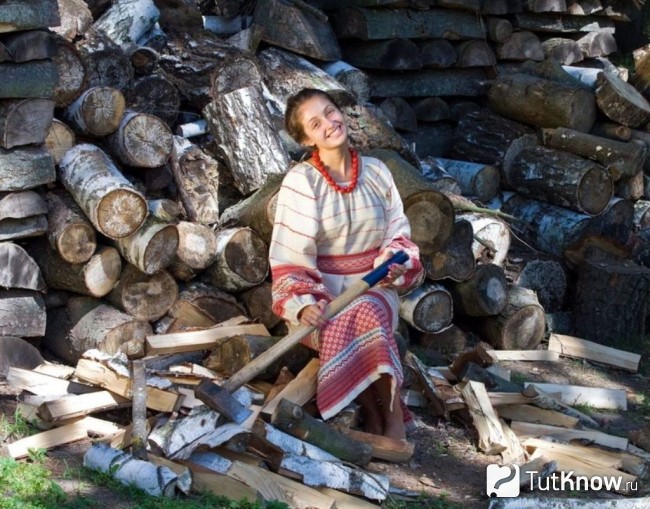
The high density of wood determines a large amount of heat when it burns. Wood is hard, medium hard and soft.
Hardwoods include beech, oak, hornbeam and birch. it the best firewood for a bath. The highest temperature can be obtained using oak logs. Their long smoldering maintains a sufficient level of heat. The cost of oak firewood is quite high, so birch fuel is often used for the sauna stove. This material has one drawback: when it burns, tar is formed that settles on the walls chimney... To clean it, it is enough to put some aspen wood in the stove at the end of the firebox.
Fruit and conifers are of medium hardness. Firewood is isolated from them less heatthan oak or birch logs. The material from the pear and apple tree flares up well and aromatizes the air, and spruce, pine, cedar and larch firewood emit a pleasant aroma and useful essential oils when burned.
Softwoods include alder and aspen. Firewood from them, when burning, emit very little smoke and soot, being an ideal option for a "smoke sauna". Together with birch logs, they provide excellent heat in the steam room.
Important: do not use rotten wood logs. When burned, they give off an unpleasant odor and little heat.
Humidity of wood for a bath
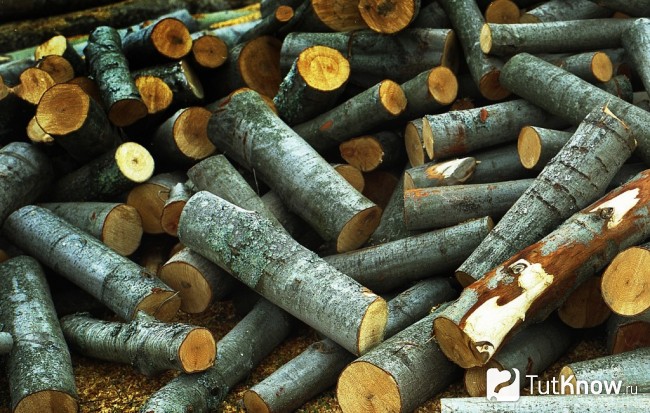
Freshly cut wood can contain up to 50% moisture. Raw firewood does not burn well, therefore it requires drying to a rate of 15-20%. Dry logs, when hitting each other, should make a sonorous sound. This determines their suitability for the firebox. In addition, well-dried firewood is half the weight of raw logs.
Proper preparation and storage of firewood for the bath
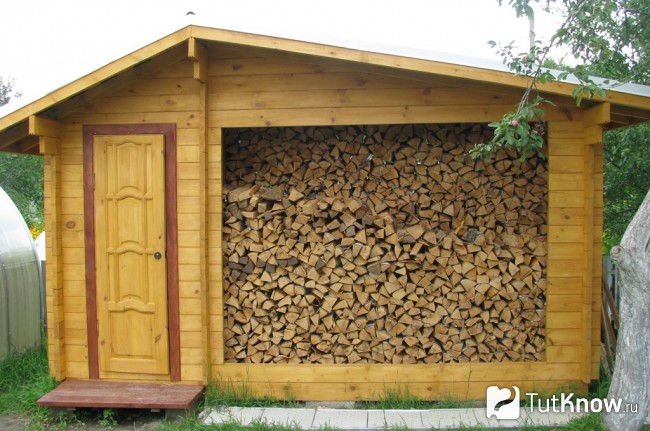
The timing and methods of preparing firewood have been known for a very long time. Harvesting began in late autumn and continued throughout the winter. The reason is simple: the movement of juices in the tree stops in the autumn, so the logs from it will be drier. Frozen wood splits more easily. If you prepare firewood chopped for a bath in winter, then in summer they will dry out enough and will be ready for use.
Preparing firewood is not easy. The tree must be cut down, cut into logs, brought home and chopped into pieces. Few people do it on their own these days. Usually ready-made firewood is simply bought. It remains only to fold them correctly, dry and save.

To make the wood dry and not rot, there are ways to stack it:
- A woodpile-stack is arranged near the fence or along the wall of the house free of openings. The ends of the woodpile are limited by four strong stakes driven into the ground. A flooring of boards or bricks is laid between them. Logs are placed on it with their ends outward and with a slight slope back.
- Stacking firewood is not stable, although it does not take up much space. Therefore, a covered room with wooden walls and a log storage floor is ideal. If it is absent, firewood can be folded in an open space in a circle in the form of a house or a stack. At the same time, a slight slope is created in the structure for the drainage of rainwater along its sides, and not inward. The stability of the woodpile stack depends on the stacking of firewood. For each log you need to find appropriate place.
Drying logs for a bath
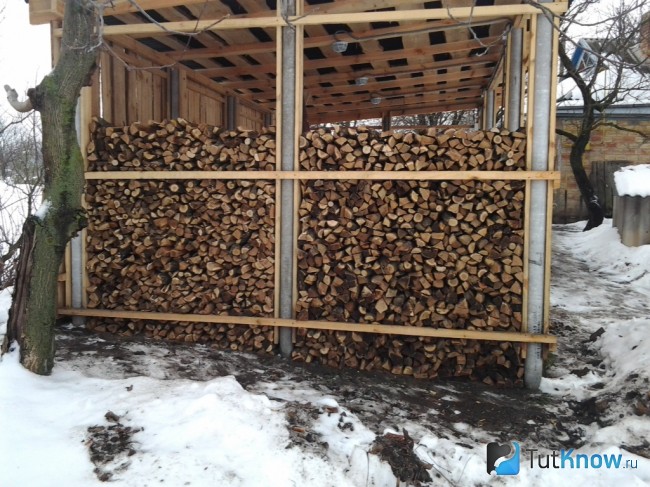
Commercially available firewood is dried in electric field or in a special cell. This pleasure is expensive. Therefore, you need to know about drying logs naturally.
In the garden there is always a place for a woodshed, in which the kindling material can dry in any weather. If the sides of the woodpile are left open, the wood will dry quickly under the roof. In the absence of a special room upper part woodpiles are covered with roofing material or foil. Proper stacking of firewood will ensure that it dries out even with high humidity.
Calculation of the volume of firewood for a bath

In order to stock up on a sufficient amount of firewood and at the same time not overpay for their delivery, you need to know how to calculate it. The amount of chopped firewood is calculated using special units and coefficients.
The volume of a car body and the volume of logs loaded into it are different things. Since the process accurate calculation the volume of densely stacked logs is quite complex, loggers and sellers use their own unit of measurement - a warehouse meter. For it is taken a densely packed woodpile, the height, width and depth of which corresponds to one meter.
One cubic meter of firewood is calculated with K \u003d 0.7. It turns out that 1 storage meter \u003d 0.7 m 3 of firewood. Usually logs are brought in bulk in a car. In order not to waste time on laying the woodpile and calculating its cubic capacity, the volume of the body is multiplied by K \u003d 0.82 and the number of storage meters is determined. For example: with a car body length of 3.5 m, a width of 2 m and a side height of 1.5 m, its volume will be 10.5 m 3.
Applying K \u003d 0.82, we get 8.61 stock meters. With an additional factor of 0.7, the counting will show the amount of firewood in the amount of about 6 m 3. This is almost 2 times less than the body volume. Using this calculation method, you will always accurately determine the amount of firewood you need to pay for.
How to chop wood for a bath - watch the video:
We hope that the material of our article has explained to you what kind of wood to heat the bathhouse with, how to prepare, fold and preserve them until the moment when they give you heat and enjoy the beauty of living fire.
What kind of firewood is suitable for kindling the stove
At all times, wood was the most demanded material for stove heating of premises. But if earlier the preparation of firewood was a rather long and laborious occupation, now many auxiliary devices have been invented for this, such as saws, cleavers, wood splitters and others. This allows you to harvest any firewood in unlimited quantities. Of course, you can buy ready-made firewood, but you cannot be as sure of their quality as in the firewood that you prepared yourself. Therefore, it is better to do it yourself.
The scheme of heating the stove with wood.
In fact, the location of the plot has the main influence on the quality of firewood.
It is better if the plot is in a dry place - the wood chopped there, in terms of quality, will always be an order of magnitude higher than those chopped from the lowlands. After all, trees growing at high humidity do not develop correctly, and do not even reach an average trunk thickness. The bark of such trees is often covered with moss, and the logs are crooked and knotty. This is especially true for trees such as birch, spruce, pine. Also, do not be seduced by forest belts along busy highways, the wood is literally "saturated" with exhaust gases, which means it is saturated with many substances harmful to the body, and it is better not to heat the stove with such wood.
Main types of wood for kindling
What kind of wood is used to heat the stove, but not all wood is good. There are several main tree species growing in central Russia that can be used to heat a stove. The most common tree species for firewood are oak (princely), birch (merchant) and alder (royal).
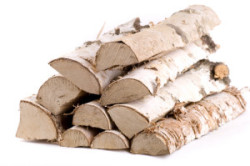
Birch firewood melts quickly and retains heat for a long time.
Oak logs. It is possible and necessary to heat the stove with oak wood. The best quality oak firewood comes from middle-aged trees, since young oak trees give little heat and fill the air with the smell of coal. And the firebox with an old oak will significantly add the amount of ash, moreover, it significantly burdens the air. When fired with middle-aged oak wood, the air is filled with forest freshness, and this air is healing for children, and also helps to eradicate many ailments. Oak has the highest heat dissipation.
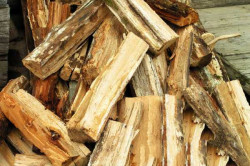
Oak logs give little heat and fill the air with coal air.
Birch firewood is the best to heat the stove in the sauna. Ideal wood in terms of price-quality ratio. They have almost the same heat dissipation as oak logs. They burn for a long time and form a high, even flame without the formation of sparks, thanks to birch bark they are excellently kindled. When using birch firewood, the air is filled with healing substances that have a beneficial effect on the body in case of respiratory diseases, which is why birch is so often used to heat a bath. Birch does not lose its main properties during long-term storage, but after two years it becomes less fragrant, and therefore healing. When using birch firewood, quite a lot of soot is formed, so it is advisable to add aspen stakes at the end of the firebox, which are able to loosen the soot accumulated in the chimney.
Back to the table of contents
Alder firewood is not called royal for nothing
According to legend, it was with such wood that the premises of the royal dynasties were heated. The heat transfer of alder wood is lower than that of oak wood, but due to the fact that resins in alder are practically absent, they do not form soot during the fire. They, just like aspen, can be used to clean the chimney from soot. Alder firewood dries quickly (even under natural conditions) and flares up very easily, while burning, they release substances that have anti-cold properties. Alder logs are very much appreciated by barbecuers, and alder sawdust is indispensable for smoking meat and fish.

Alder firewood does not form soot in the oven.
Logs from fruit trees are quite peculiar. Most of them have an average heat transfer, about one and a half times less than oak. When burned, they form a great scent that improves mood. The most popular “kindling” trees are cherry and apple trees. Cherry blocks are smoked quite strongly, but they are perfectly kindled. In contrast, apple wood does not smoke and is better to some extent.
Pine, spruce, larch. Coniferous wood blanks are the least fire safe for kindling furnaces due to the high resin content. When burning, such blocks "shoot" with coals, spark strongly, besides, they are quite difficult to extinguish, emit a lot of carbon monoxide. All because of the same resinous substances, a lot of soot is formed during combustion. It is necessary to heat the stove with coniferous woods with utmost care. But even with some disadvantages, such firewood is very popular in order to heat the stove. Produce an unforgettable heady aroma that has a beneficial effect on respiratory system person.
The biggest advantage of linden wood is its healing aroma. The tree burns evenly, but due to its low density it burns out quickly and practically does not produce coal. The aspen stakes should be noted separately. It is worth using such wood for kindling the stove only at the very end, when other wood has already flared up. Aspen has a unique ability to loosen the soot deposited in the chimney. And this is perhaps the only advantage of aspen firewood. Aspen flares up very badly, burns quickly and does not give any coal or heat. Burning the stove with aspen is not worth it, you will only waste time.
It is better to split the prepared firewood into smaller logs right away, especially if you are not sure that they are dry enough. Remember that raw firewood produces less heat than dry wood by 30%, besides, it emits moisture, smokes, clogging the chimney with soot. Melting raw wood is much more difficult.
What kind of wood is better for stoking the stove in winter and what is the alternative?
The rule is simple - the higher the density of wood, the more heat it gives when burning. Therefore, the breed itself is no longer so important. For dry wood of room humidity (less than 20%), the density varies in the range from 0.15 g / cm3 (balsa) to 1.28 g / cm3 (guaiac wood is a very dense dark green wood, parquet is made from it). If you do not take into account the exotic, the best firewood is plum and hawthorn (density 0.80, for wild plum - up to 0.85), then apricot (0.77), ash (0.75), oak and pear (by 0.69), maple (0.67), larch, cherry and elm (0.66), birch and apple (0.65), walnut (0.64), horse chestnut (0.59), linden (0.53), pine (0.52), aspen (0.51), alder (0.49), willow (0.46), spruce (0.45), fir (0.39).
In the Lower Volga region, apricot firewood is considered one of the best - their density is higher than that of oak, the smoke is fragrant, the apricot grows very quickly and dies off just as quickly (fruit trees are cut down at the age of 15-20 years), therefore, in any suburban area for During the season, a large amount of apricot waste is generated - from large branches to whole trunks of 20-30 cm in diameter - you can easily prepare a few cubic meters of apricot firewood, the owners will also say thank you for the disposal of "waste9quot ;.
The most optimal combination is birch and aspen.
Birch firewood is a very good option, it burns for a long time, does not spark and gives an even flame. But they have a drawback, they have a lot of resinous substances, and especially a lot in the bark, it is not recommended to use it in kindling. Also, these woods themselves emit a lot of soot, which is deposited in the chimney.
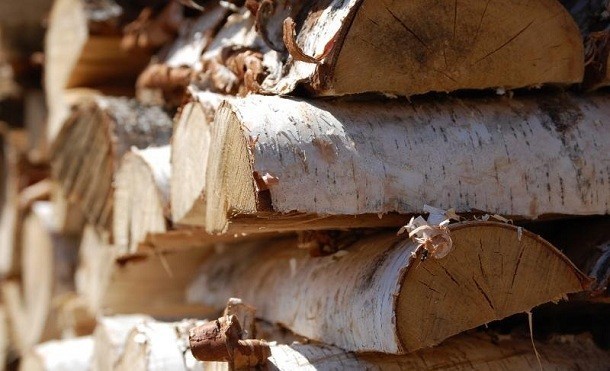
Aspen wood is difficult to ignite and gives little heat and burns quickly. It has a bright long flame that does not smoke, it is used to clean the chimney from soot. This wood can be put in an already burning stove, it will keep the heat.
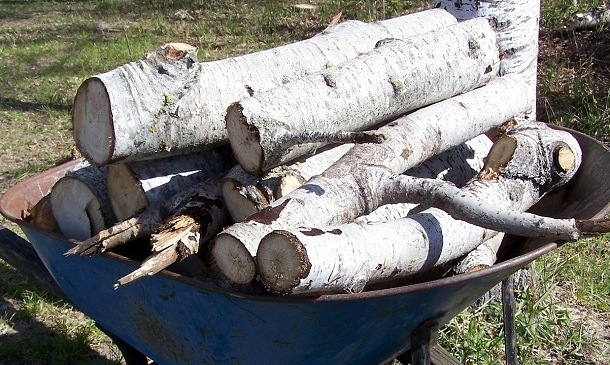
Pine and spruce firewood.
There are also a lot of resinous substances in these woods, pine burns better than spruce, but you need to look after these woods, they crack and shoot burning coals.
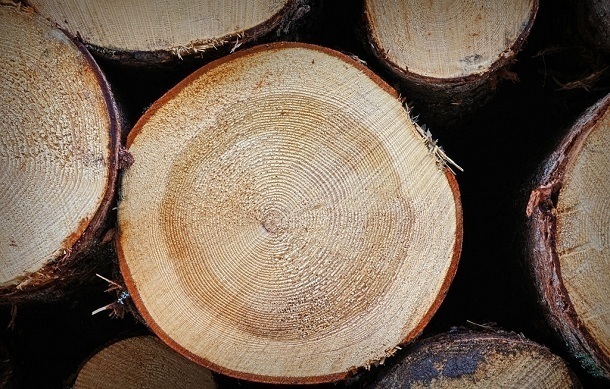
But there are general requirements for all types of firewood, they must be well dried and last year. fuel briquettes, they are made of wood sawdust and do not contain harmful substances, but they are quite expensive and there are not always factories for their manufacture.
It is best to heat the stove with dry wood. Undried firewood from any wood gives little heat, clogs the chimney faster and produces a lot of ash from them.
Oak firewood is very hot, birch, ash and maple firewood also gives a lot of heat. Ash has a variety, it seems it is called swamp ash, if I don’t confuse something, they burn hot, but opening the stove door, sparks fly in different directions, so you need to be careful with them.
Poplar firewood gives little heat, willow also does not burn hot, alder firewood can give resinous deposits in the chimney, which is fraught with a chimney fire on a frosty day and can lead to a fire.
Pine and spruce firewood burns well, but they crackle (shoot) and there is not much heat from them, but little ash.
As an alternative, briquettes made from pressed sawdust are used, they give more heat than firewood and burn (smolder) slowly and for a long time, but such briquettes are good in special stoves, they are of little use in an ordinary stove.
Alternatively, it is a thick, black bark that grows at the base of large birches. Pieces of such bark burn almost like coal, giving a lot of heat, but it is better to throw them into the furnace when there are burning red embers in it.
And I found an alternative to firewood quite by accident, when I was young and there was nothing to heat the stove in in the fall. We moved to a small village in the forest. They gave us an old barrack, nothing to heat, we didn't earn money, even though you cry. I went into the forest, I think at least I’ll find a mushroom, but I met a large curly pine tree. There were so many cones under it. I picked up a basket, brought it home and lit the stove. For a long time they helped us out, they burn well and are completely free. You just need to bend over, collect and bring home.
How to properly heat the stove with wood, types of wood
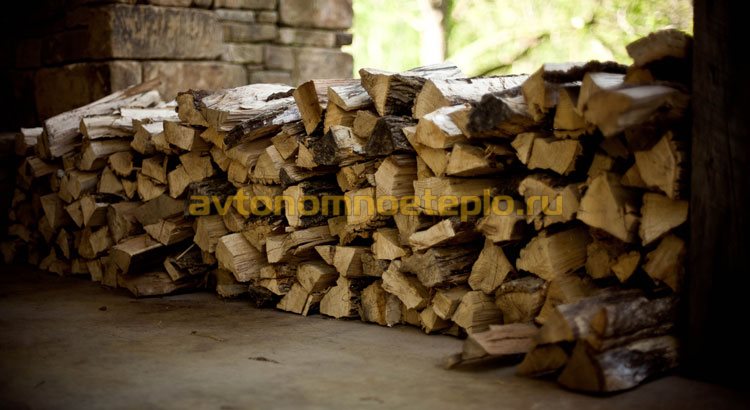
What kind of wood is better to heat the stove
As a general rule, manufacturers indicate that for the oven better firewood non-coniferous hardwood. When burned, the wood does not emit resin, it maintains the required combustion temperature. An additional plus, minimal soot deposits on the inner walls of the chimney.
It is not recommended to heat the stove with pine and spruce wood, garbage. If necessary, peat and wood briquettes or sawdust are used as an alternative. The optimum moisture content of the fuel is 20%, which corresponds to the annual storage of firewood in a dry room.
What kind of wood is best for firewood
Wood of different species, differs in calorific value and characteristics of combustion. Therefore, when deciding what type of fuel the furnace will be fired with, the operating and other characteristics of the selected firewood are taken into account:
- Pine - firewood has a high combustion temperature due to its high resin content. The structure of the tree contains many voids or cavities, in which resinous deposits are located. When burning, micro-explosions occur. Sparks and burning pieces of wood scatter from the burnt areas. Calorific value 4.3 kWh / kg. One firewood storage meter, when fully burned, releases 1.6 MW of thermal energy.
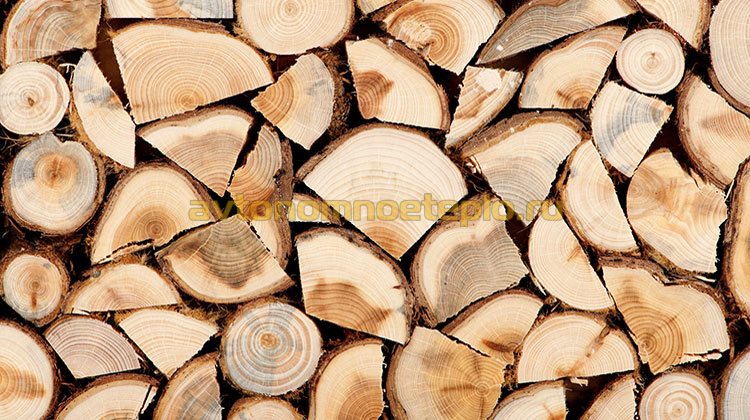
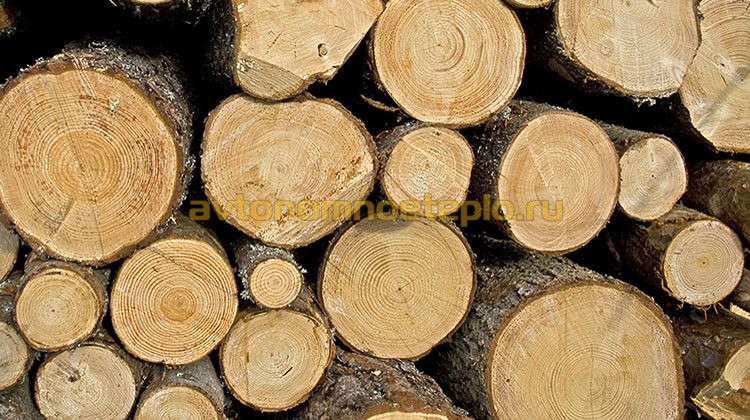
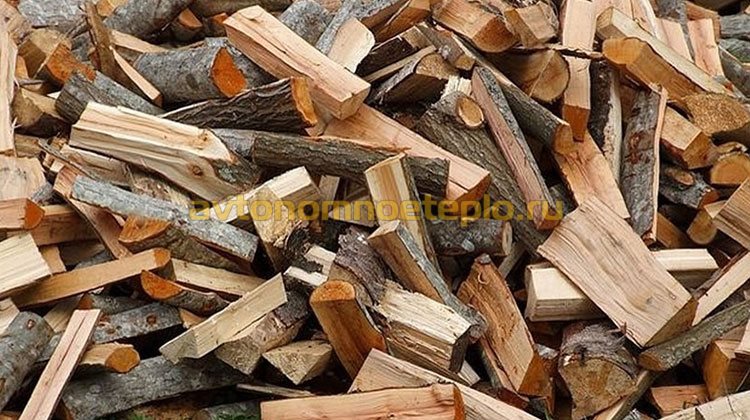
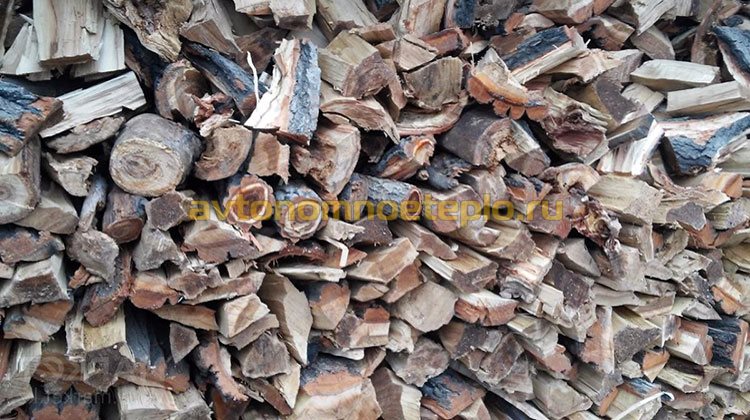
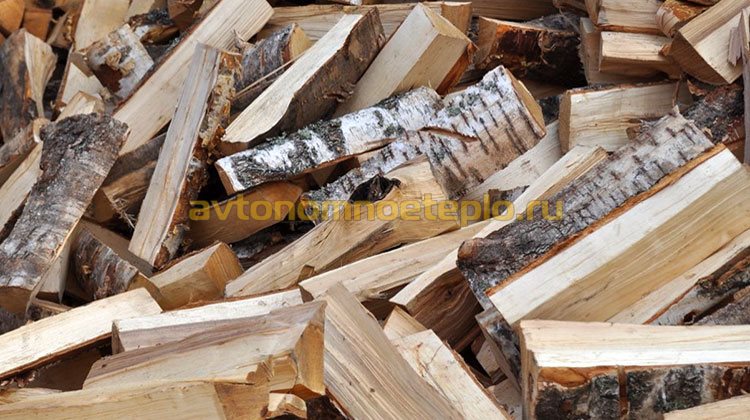
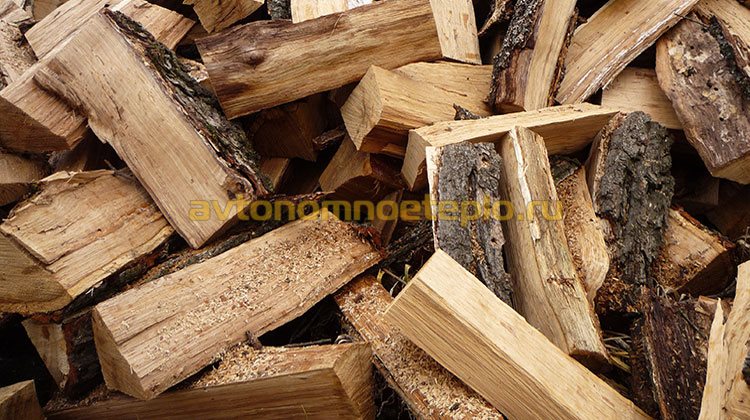
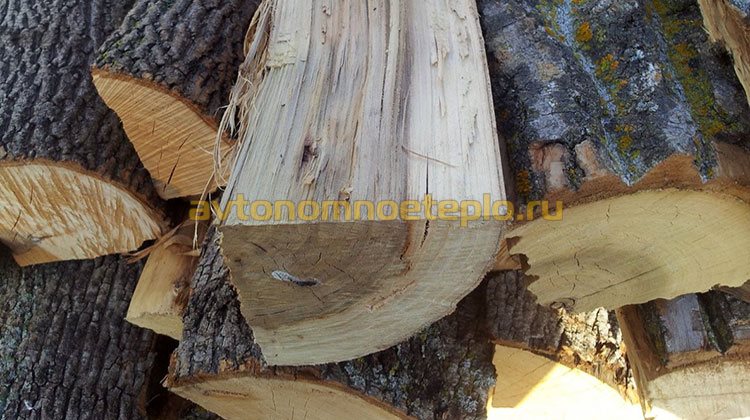
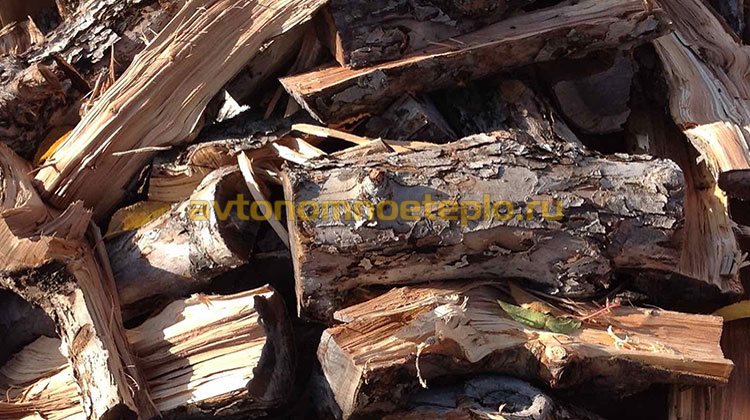
In addition to the already listed types of wood, peat briquettes are popular. The advantage of briquettes is the absence of the need for splitting, drying and any other preparation for combustion.
As an alternative to lump wood, sawdust can be used. Kindling is performed with wood. After the fire has flared up, sawdust is added to the firebox at the rate of no more than 30% of the total volume of fuel.
What kind of wood to heat to clean the chimney
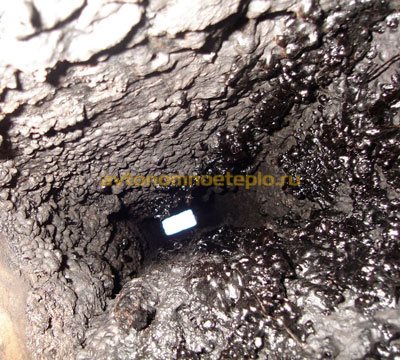
Prevention of the condition of the chimney is performed in several ways. If the deposits are small, burn aspen firewood (analogous to alder). The stove is well heated. Some craftsmen bring the combustion mode to such an intensity that there is a hum in the pipes. In addition to firewood, special chemical briquettes are burned.
Burning off the tar is an effective preventive measure, but does not help if deposits inside the chimney have reached critical levels. In such cases, mechanical pipe cleaning will be required.
Is it possible to heat a wood-burning stove with coal
You can decide what to heat, coal or wood, by answering a few questions:

The temperature in the oven when burning wood is maintained at 300-350 ° C, rarely, the heating rises to 450 ° C. The combustion temperature of coal is much higher. Under certain conditions, the air in the furnace heats up to 1000-2000 ° C.
Furnace fire rules
To reduce the consumption of firewood and optimize the combustion process, certain rules for ignition and combustion are observed. To make kindling a little easier, a few recommendations will help:
- The standard size of firewood - logs are laid in the stove, approximately 5 cm less than the length of the combustion chamber. If during the preparation of firewood, try to make the logs of approximately the same size, you can greatly facilitate the process of kindling.
- Correct laying - the logs are stacked so that there are gaps between them for free air passage.
- Wood moisture - the stove can be heated with raw wood, but a large amount of tar and smoke is emitted. Therefore, as general recommendation, there is a rule: it should be heated with dry fuel, with a moisture content of 20-25%.
How to properly melt the stove with wood
Kiln lighting is an art. If it is wrong to melt and maintain the fire, the temperature in the firebox will never exceed 40-50 ° C, which is not enough to heat the room.
Kiln firing is carried out in several stages:
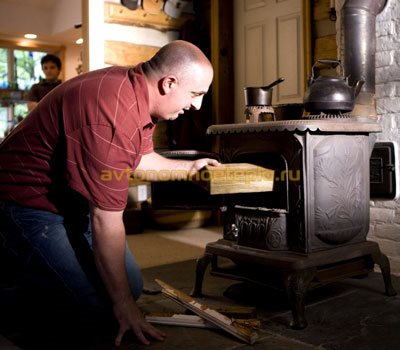
Heating with fuel briquettes is somewhat easier. On the burnt seed, put pressed firewood. The calorific value of briquettes is higher than that of ordinary firewood, therefore, heating will take place faster by 20-30%.
How to heat the stove with raw wood
The cost of high-quality dry firewood is not so much higher that you can save a lot. But, if there are no other options, you can melt the stove with raw fuel.
To light the stove with raw wood, follow a phased plan:
- Firewood is chopped into small pieces.
- The seed is made from small chips.
- Gradually begin to add larger fractions of wood.
- After the coals have appeared, you can add regular logs.
During the ignition of the oven, several large logs are placed on top of the oven. Warm air, rising, will dry the wood and facilitate further heating.
Raw birch firewood, it is better not to use it. When firing up, smoke and tar are released, which leads to a quick failure of the furnace and the smoke exhaust system.
How to properly heat a brick oven in winter
The metal stove works equally smoothly in winter and summer. Precautions are required when operating a brick stove.
A private bath is an unheated room, often used once every few days. During this time, the masonry has time to cool and freeze. A similar situation is observed in country housesleft without heating for a long period.
The burning temperature of wood in the oven is at least 300 ° C. Dry fuel burns, heating flue gases to 400-450 ° C. The temperature difference between frozen bricks and burning wood leads to cracking of masonry and seams. As a result, after the operating season, it will be necessary to overhaul the brick oven.
To avoid unpleasant consequences, the firebox is carried out slowly, allowing the walls to slowly warm up. Fuel filling should not exceed 30% of the total volume of the combustion chamber until the temperature of the masonry rises to the required one (the brick becomes warm). After that, the combustion will continue as usual.
How to properly heat the stove so as not to burn out
Carbon monoxide is a combustion product of wood that is contained in smoke. With proper operation of the stove, flue gases are discharged outside through the chimney. The ingress of carbon monoxide into the room is dangerous.
In order not to burn out, you will need to follow several recommendations:
- It is forbidden to completely close the dampers and blower in order to increase the burning time of the wood.
- Before kindling, check the presence of traction.
- The furnace is heated up gradually, when the chimney heats up, the draft increases.
- Regular maintenance is carried out - if necessary, the chimney is cleaned, malfunctions are eliminated.
- They use high quality dry wood.
Bake long burning, fire properly with the dampers closed at ⅔ and switched to a special gas generation mode. Even so, the access of air and the removal of combustion products is carried out in full.
Be especially careful when using coal. During combustion, coal requires more oxygen than wood. After the air in the firebox burns out, the draft will deteriorate, carbon monoxide will go into the room.
When can you heat the stove after laying
It is impossible to heat the stove immediately after laying it. Brick put on clay mortar... Clay hardens when heated. But, when overheated, it quickly loses moisture, strength and cracks.
The brickwork is initially dried. They do it like this:
- It is important to avoid dampness in the firebox and smoke channels; for this, all doors and windows are opened, only after that the fire is lit.
- The work is performed at least 2-3 days after the end of the masonry work. The furnace is carried out for 0.5-1 hour not at full capacity. The oven is heated 2 times a day.
- Finely chopped firewood, wood chips, shavings are used as fuel. You cannot drown with full-fledged logs.
- The forced drying process takes 4-6 days.
It turns out that after laying, the stove can be heated in a week, using forced drying. If the work is done correctly, clay composition will gain strength and at the same time maintain elasticity. After a week of drying, they move on to a full-fledged firebox and enjoy the benefits of their own autonomous heating.
Calculation of the power and temperature of a warm water floor
The success of winter recreation in the country depends on the choice of firewood.
Not all owners of suburban real estate put their houses in winter conservation. Staying at the dacha in autumn and winter largely depends on the quality of firewood, so special attention should be paid to their choice.
The harder the better.
For centuries, people have heated their stoves with wood, many owners of suburban real estate have remained faithful to this habit to this day. So what is the best firewood for heating a country house to choose? 
If you have a traditional stove not installed in your country house, and not an open fireplace, you can use any kind of wood to heat it, just the use of some types of wood requires increased attention to the chimney. Today in the market of our region there are 4 main types of firewood: oak, birch, pine and mixed.
Democratic potbelly stove. We choose heating for a country house.
What kind of fireplaces modern interior fit?
Oak firewood is the most nutritious. The oak burns slowly, but it gives off a lot of heat. Oak wood contains almost no resin, so the soot inside the chimney hardly settles. But oak firewood gives off a lot of carbon monoxide, so special attention should be paid to the chimney damper. When firing the stove with oak wood, the pipe must always be open.
Birch firewood is a hit of sales. This is due to the prevalence of this tree in our latitudes, besides, birch grows much faster than oak, so such firewood costs less than oak. Birch wood is perfect for heating a stove. Such wood burns faster than oak wood and gives off heat very quickly. But birch, especially its bark, contains a lot of resin, so soot is deposited in the chimney, and it needs to be cleaned much more often than when using oak firewood. True, if you rarely visit the country in winter, then you don't have to worry about the cleanliness of the chimney. The soot will not clog it in a few years.
Pine firewood can only be used out of despair. Pine wood contains a lot of resin, which has a detrimental effect on the condition of the chimney. The market mainly sells sawmill waste, which consists mainly of bark, which means that the resin content in these wood is even higher, and the chimney will clog even faster. So you should refrain from using such firewood.
Mixed firewood consists of different types of wood, such firewood is obtained as a result of pruning urban green spaces. When buying such firewood, you should pay attention to which species prevail in the total mass. Only if it is an aspen, then you can buy, but it is better to refrain from buying a poplar. Poplar burns poorly and gives off a bitter smell that can ruin your weekend. In addition, such wood burns poorly and generates little heat.
Aspen is more suitable as firewood. Although it does not give as much heat as birch, it contains almost no resin, and its use does not lead to the settling of soot on the walls of the chimney.
Food for the fireplace.
In the event that you are the happy owner of a fireplace, then you should be more careful when choosing firewood. Pine and birch will not work, this wood "shoots" sparks and throws burning chips out of the flame. In addition, such firewood burns out very quickly - given the gluttony of the fireplace, your vacation can turn into a working shift of a stoker.
It is best to use oak firewood without bark. The ideal option would be wood from fruit trees. Such wood exudes a pleasant aroma when burning and creates a particularly pleasant atmosphere in the room. You can use apple, pear, cherry as firewood for the fireplace. Plum should be discarded, its wood, when burning, emits a slightly bitter odor, which not everyone likes.
Firewood for the fireplace should not be thin; logs with a diameter of 6-8 centimeters are best. The firewood should not be too dry, otherwise you will get a blazing fireplace instead of a calm, even flame. Firewood for such a heat source should be stored outdoors under a canopy; this storage method will provide them with optimal humidity.
We paint the flame.
The flame in the fireplace can be given various shades; for this, the wood must be soaked in special solutions. There are many recipes for such solutions, but most of the components for their manufacture are almost impossible to purchase. Only three recipes for such formulations are readily available. A strong aqueous solution of table salt gives the flame a beautiful yellow color. To achieve this effect, firewood must be soaked in a salt solution for 2-3 days, and then dried. Crepo
The salt solution is determined by the chicken egg, the salt must be dissolved in water until the egg floats on the surface.
An aqueous solution of potassium permanganate will color the flame blue or green. The color of the flame is determined by the concentration of the solution: the higher it is, the more the flame goes into blue. The procedure for preparing this solution is the same as with salt. That's just the concentration to be determined experimentally.
A solution of copper sulfate gives a bluish glow to the tips of the tongues of flame. The concentration of the solution must also be selected empirically. Much depends on the density of the wood, its porosity, moisture content.
To achieve the color effect, it is not necessary to clog the entire furnace with soaked wood. 2-3 logs in one tab are enough.
Chimney cleaning.
There are many ways to clean your chimney. The safest and most correct is the classic one. To do this, you need to climb onto the roof, remove the umbrella from the pipe and clean it with a brush. The soot will crumble inside the fireplace or stove and can be removed with a scoop. A brush for cleaning the chimney can be made independently from a steel cable with a diameter of at least 6 millimeters, to which you need to tie a disc with a metal brush. Such discs are installed on a grinder and are sold at a tool store. The cost of the brush will be several times lower than a special device for cleaning the pipe, and its efficiency is just as high.
Weight folk recipes for chimney cleaning without mechanical cleaning exists. For example, you can heat the stove with aspen wood or add potato peelings to the coals. Also now on sale there are special products for cleaning chimneys.
All these products clean the chimney by burning soot in it. And this is their main drawback and danger. Soot is coal dust, which, when burned, gives off a huge amount of heat, and not every chimney can cope with this heat. When you burn the soot out chimney it is not smoke that comes out of it, flame beats out of it. Moreover, the combustion intensity is so high that the tube looks like the nozzles of a space rocket. Chimneys cannot withstand such a heat load and burn out. Through burnout, the flame spreads to the roof and a fire starts. So it's better not to be lazy, but once a year to climb onto the roof and clean the chimney using the traditional mechanical method.
Liked? Share with your friends!
For many centuries the most demanded fuel in stove heating is precisely the wood. And if earlier the process of harvesting firewood was exhausting and laborious, today there are a lot of auxiliary devices - wood splitters, circulars, saws, etc. Of course, if you wish, you can buy ready-made fuel, but you can be 100% sure only in those firewood, which were prepared by hand. But for this you need to find out what kind of wood is better to heat the stove.
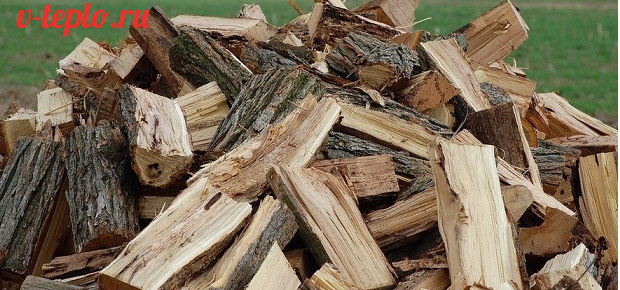
Table - heat of combustion of firewood
At 20% humidity (air-dry) kWh / m3
What firewood to choose for the furnace
And now, finally, let's find out what kind of wood is better to heat the stove. Each species has a different calorific value, but you should opt for logs with the highest specific gravity. The most suitable option is birch firewood, but they cost much more than the same aspen. But in terms of the amount of heat generated, they are second only to oak wood.
Thus, a cubic meter of birch is equal to:
- 1.5 cubic meters of aspen;
- 0.75 cubic meters of oak;
- 1.3 cubic meters of spruce;
- 1.1 cubic meters of alder;
- 1.2 cubic meters of pine.
It turns out that the ideal option is oak firewood, but they are quite rare, and it is a pity to use such a valuable material as fuel. Therefore, it is better to opt for birch.
What are the “correct” firewood for the furnace?
Many people don't know that each type of wood has its own unique characteristics. So, some are ideal for construction works, others - for heating the house. Moreover, the heating device in which the fuel will be burned is also important. For example, in a fireplace you need to heat wood, which smells good when burning, but does not contain a lot of resin. The presence of resins is fraught not only with strong smoke, but also with the fact that during the combustion process firewood can "shoot", and this can lead to a fire.
As for stoves, wood is required here, which not only burns for a long time, but is also characterized by high heat transfer. The ability to generate smoke, the amount of ash that remains in the combustion chamber, etc. is also taken into account.
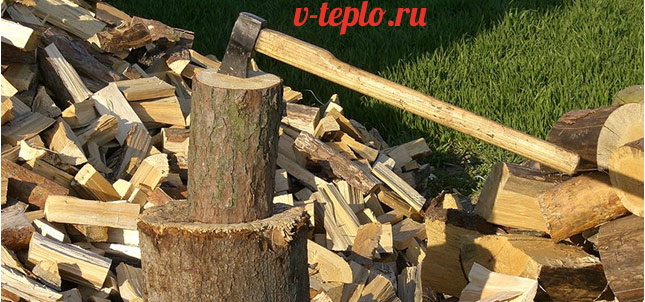
So what should be the “right” wood? They must have:
- good heat dissipation;
- high degree of flammability;
- they should burn almost completely;
- there should be little waste.
Note! All the qualities mentioned depend on both the breed and the quality of drying. For example, freshly cut firewood is not suitable for use, since it will burn poorly and emit a lot of smoke (the humidity is high). It is for this reason that firewood is compulsorily dried and is considered ready for use only when a characteristic ringing is heard when one log hits another. Note! Trees cut down in winter are considered to be of the highest quality - it is at this time that the movement of sap is the slowest. In the summer or spring, it is undesirable to harvest firewood, since at this time the material is wet and will dry out for a long time.
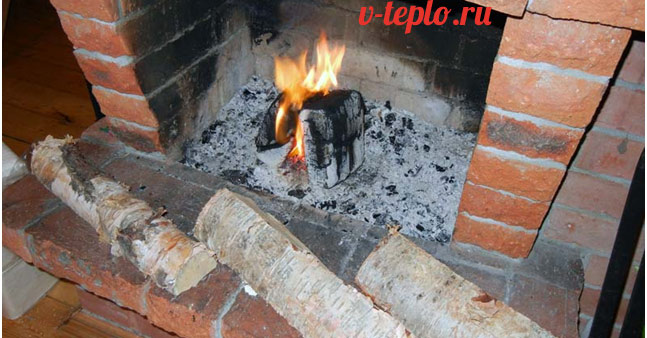
Characteristics of the best tree species
Deciduous trees are certainly better suited for a stove, because their fiber structure is dense. They burn tightly, give off heat well. It also includes fruit trees that give off pleasant aromas when burned.
Although conifers also burn well, they only smoke and smoke a lot due to the high concentration of resin. They also burn out quickly. In a word, let's go straight to hardwoods.
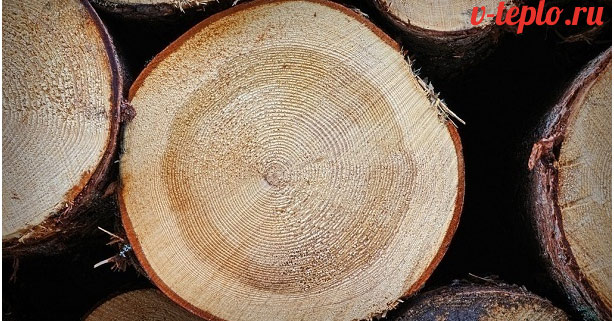
Larch
To determine which wood is better to heat the stove, you should familiarize yourself with each of the options in more detail, study their parameters in the light of the combustion process.
Oak is, first of all, a solid and valuable tree, and only then is it fuel. That is why oak firewood is elite and that is why it is expensive. Note: real good pizza is cooked exclusively with oak wood.
Not too old trees are used as firewood (if I may say so - middle-aged), since they produce more heat energy, and burning lasts longer. The heat that young trees give is too weak, and in the room there will be a pungent smell of smoldering wood. As for the old ones, they leave a large amount of ash with less heat energy, and the air in the house becomes "heavy".
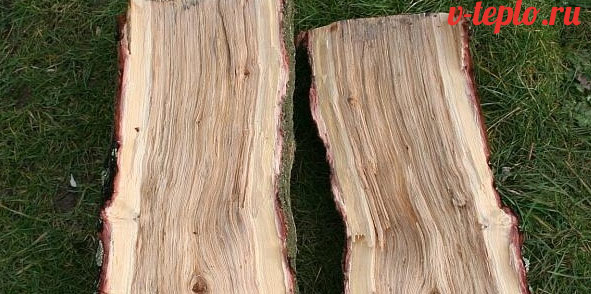
Note! When burning really good oak wood, you can feel a tart smell, an excellent aroma of the forest. All this increases the tone of the body and has a beneficial effect on health.
For this reason, it is advisable to heat the fireplace with oak.
Let's make a reservation right away that linden wood is ideal for heating baths. When burned, they emit a sweet aroma that has a beneficial effect on the respiratory system. Such wood is difficult to ignite, but the heat that forms is long and persistent. It is also characteristic that they can be stored for no longer than two years.
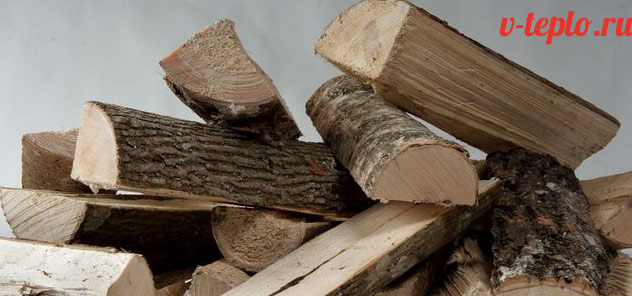
Birch firewood is also hard (like oak), and therefore is also an excellent option for a stove. Of course, in their ability to emit heat, they are somewhat inferior to oak, but by about 20 percent they surpass this indicator conifers. Moreover, they burn for a long time, and with an even flame, and yet do not spark.
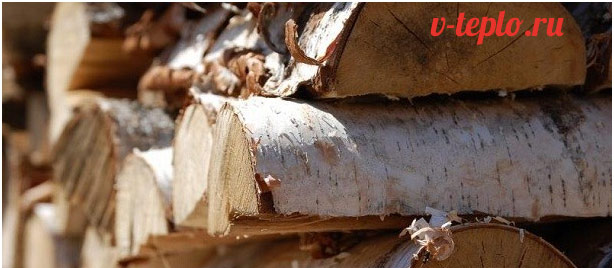
The only drawback of birch wood is the large amount of resin, especially in the bark. Therefore, it is categorically not recommended to heat the stove with bark. And when burning the firewood itself, a lot of soot is released, which settles on the walls of the chimney.
Note! To clean the chimney at the end of the combustion chamber, you need to throw some aspen wood.
When the birch wood is on fire, the house is filled with unique aromas, the air is disinfected, and the people who live there are less sick with respiratory diseases. We also add that a birch that has lain for more than two years loses these medicinal properties... Therefore, it is impossible to store it longer than this period (as well as linden).
There is nothing special to say about aspen firewood. They are not easy to ignite, they produce little heat, and they burn quickly enough. They are characterized by a long bright flame and no smoking, which is why they should be used to clean the chimney. But if we talk about what kind of wood is better to heat the stove, then the answer is obvious: definitely not with aspen.

Alder is rightfully called the "royal" tree. The fact is that this wood burns up quickly, contains a small amount of resins, releases a lot of thermal energy, but practically does not emit smoke. The ideal field of application for alder is the "black" firebox in the sauna. Moreover, when burning, the tree emits a pleasant aroma that prevents colds.
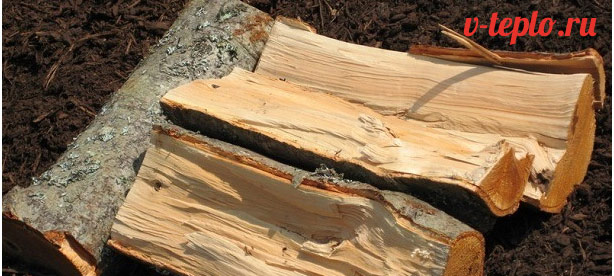
Note! If the house is heated with alder wood, the tenants will not get sick and will spend the whole winter in a vigorous and energetic mood.
Also note that with the help of these firewood, you can also clean the chimney after resinous conifers. They are also great for shashlik, and alder sawdust is used for smoking meat and fish dishes. The wood dries quickly even in natural conditions, and is stored for more than three years. During this time, its characteristic aroma is not lost.
Poplar, willow
The stoves are fired with both poplar and willow wood. But a significant drawback of both options is rapid burnout, and even an insignificant (when compared with other breeds) cost does not provide savings, because a larger amount of this firewood will be required to heat the house.
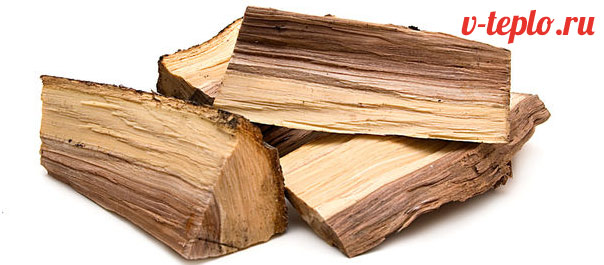
Willow and poplar are definitely low-grade wood, which is bought only when there is no way to get something better.
Fruit trees
Such breeds are optimal for heating and can quickly warm up, but, despite this, they are used mainly for smokehouses or fireplaces due to the fact that these varieties are rare.
Basically, such firewood can be obtained in the process of cutting down old gardens. They are stored (firewood) in order to cook food on an open fire.
Video - Firewood for the furnace
How to store firewood correctly?
Buying high-quality wood is not the main thing, since firewood must be properly stored so that it does not lose its original properties for a long time. Let's make a reservation right away that it won't take much time to arrange a storage space, although people with creative inclinations turn a woodpile (as this place is called) into a decorative decoration of a suburban area.
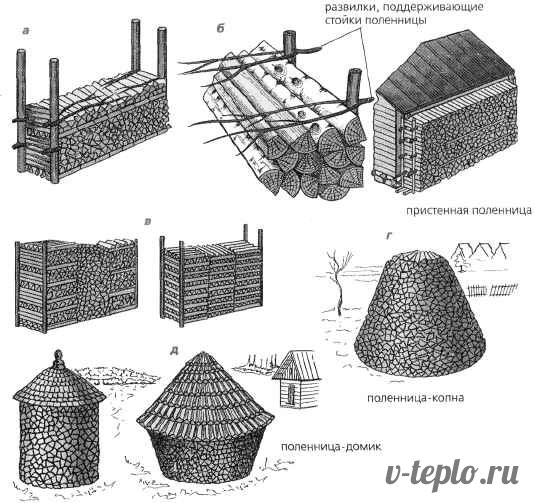
Note! Before you start laying firewood, you should choose the most suitable place and properly prepare it. This takes into account both the maximum safety of the material and the convenience of the site owner.
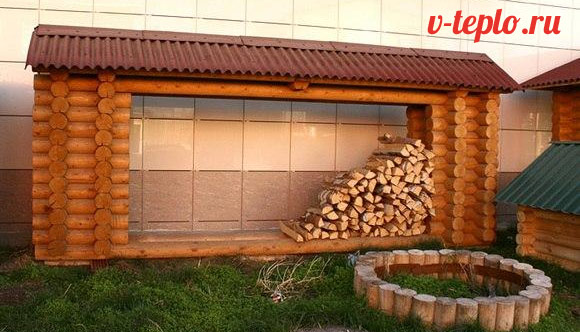
In order to preserve wood, it is necessary to take into account the nuances below.
- The first and most important point: you cannot equip a woodpile in a lowland, where moisture can accumulate. If this is not taken into account, then soon the wood will become damp back and begin to rot. And here it will no longer be up to what kind of wood is better to heat the stove - the wood in this kind of woodpile will not give a strong heat, and will emit an unpleasant smell when burning.
- Logs that are stacked in rows must be efficiently ventilated, therefore, they are necessarily stacked at some distance relative to each other.
- Finally, the storage area for firewood should be protected from precipitation, which is why it is often covered with a canopy or roof from above. Although there are alternative option: Arrange the firewood in such a way that precipitation cannot penetrate into the laid out rows.
- For good ventilation and, as a result, drying of the wood, those trees that were cut down in winter do not need to be piled up in a woodpile for at least another five to six months. So the fuel will always be ready for the heating season.
- Wood cut in spring / summer should dry much longer (about eight to twelve months). The more specific drying time depends on a number of factors: weather conditions, the location of the firewood at this time, the level of humidity and the number of warm days per year.

If we talk about the convenience for the owner of the site, then such factors are taken into account.
- In order for the wood to burn quickly, it must be dried and permanently maintained in a "dried" state. That is why a special building is being built - a woodpile - and the firewood is stacked in a special way.
- The very location of the woodpile should be chosen so that it is not far from the house - a person should quickly and conveniently collect a new portion if necessary at any time of the year and in any weather.
- Finally, all wood should be sawed and chopped well in advance, even before winter begins. Otherwise, this will have to be done at sub-zero temperatures, which can hardly be called a pleasant experience.
Video - Woodpile
General requirements for storing firewood
Regardless of the option chosen, the firewood should be well dried and cut down last year, as we have already found out. All logs should be of the same length, medium thickness - in this case, the amount of valuable ash will be optimal.
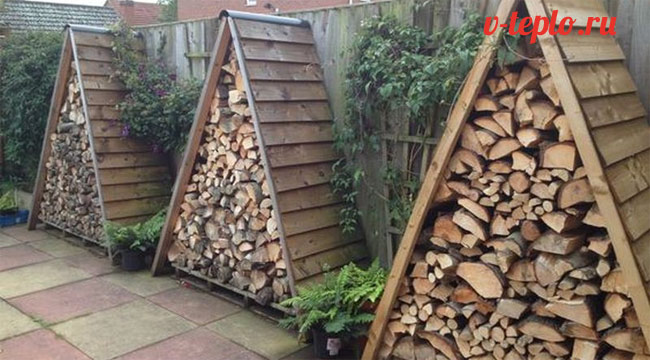
Note! To get really high quality ash, you need to use sawdust and old, dried wood. If we talk about birch species, then their ash contains about 8 percent phosphorus, 15 percent potassium and 38 percent calcium. But ash from willow wood can even contain up to 45 percent calcium.




